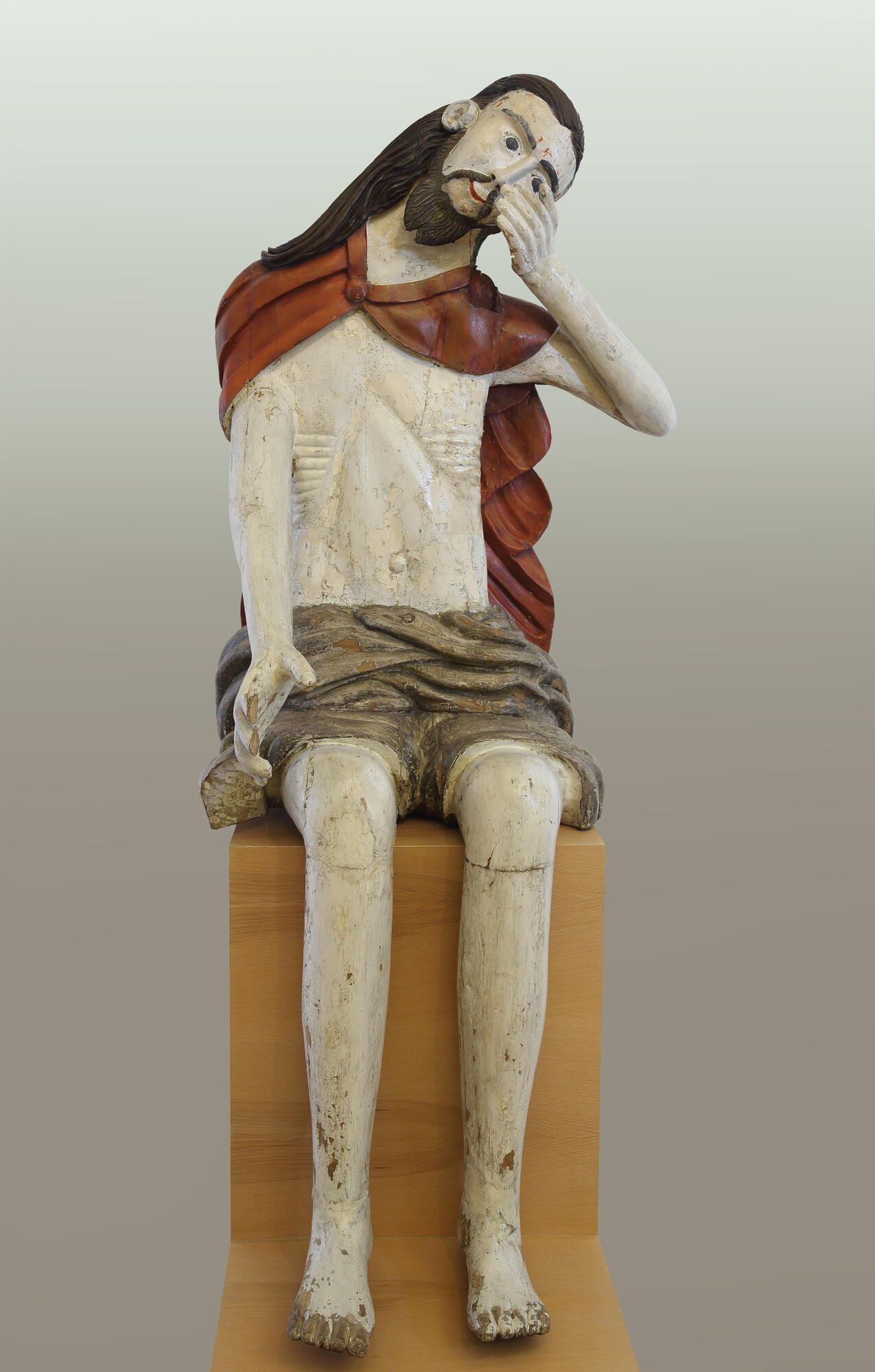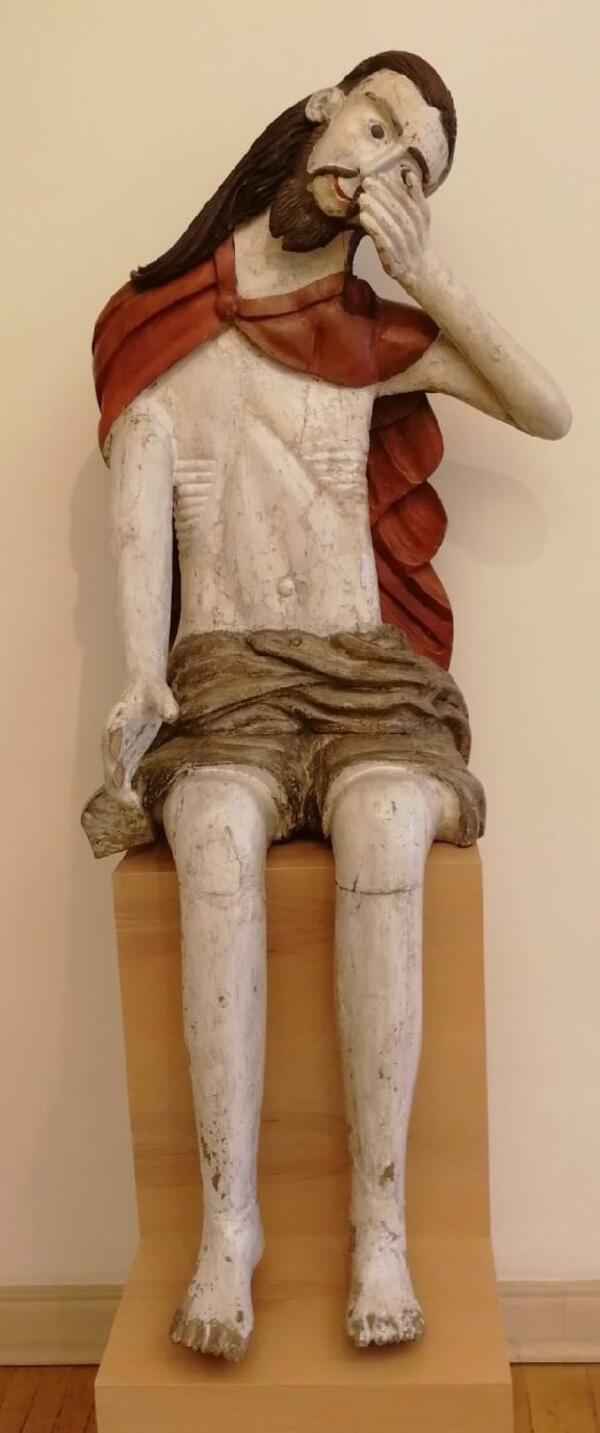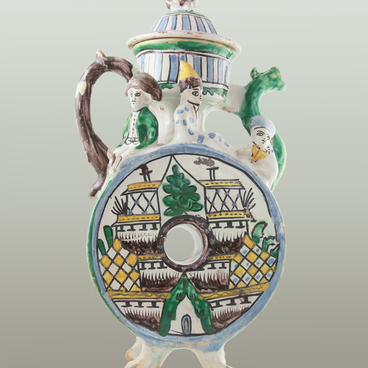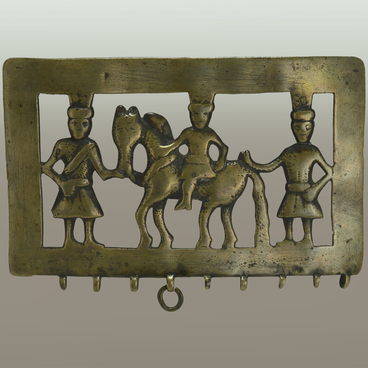The permanent exhibition of the Department of Folk Art in the Russian Museum presents ten sculptures. Made by folk craftsmen, these works are truly unique.
The popular interpretation of the images of saints was especially clearly manifested in wooden sculpture — these works include the composition “Christ in the Dungeon”, which became widespread in the 18th century. The figure of Christ was most often placed in wall niches or in icon cases near the iconostasis at the northern wall of the church.
The exhibit entered the Department of Folk Art of the Russian Museum in the 1960s thanks to the employees of the department — Margarita Nikolaevna Kamenskaya and Natalya Vasilievna Taranovskaya. It was an amazing story! In 1960, an expedition was organized in the Arkhangelsk region, during which the employees visited the Velsky Museum of Local Lore. The director of this museum assigned the cleaner to burn a wooden sculpture. She learned that the Russian Museum specialists were collecting works of folk art, so she supplied them with four sculptures. Subsequently, it was possible to identify the place of origin — the Nizovskaya chapel of the village of Ugronka, Arkhangelsk Governorate.
Wooden church sculpture was persecuted not only in Soviet times, but in the 18th century as well. The Synod and the Old Believers claimed that three-dimensional images resembled the decoration of Catholic churches: the multi-tiered iconostases of churches and cathedrals were decorated with three-dimensional carved, painted and gilded figures of saints, evangelists, Sabaoth, Christ and the Mother of God. The royal doors, the junctions, the protruding cornices and arches, in carved cartouches among the lush scrolls of floral ornament, featured the images of angels, cherubs, and apostles. At the top of the iconostasis were multi-figure compositions depicting gospel scenes.
The collection of the Russian Museum contains more than 200 sculptures that were either acquired, or salvaged. These compositions prove the fact that folk wooden sculpture was a major artistic phenomenon.
The popular interpretation of the images of saints was especially clearly manifested in wooden sculpture — these works include the composition “Christ in the Dungeon”, which became widespread in the 18th century. The figure of Christ was most often placed in wall niches or in icon cases near the iconostasis at the northern wall of the church.
The exhibit entered the Department of Folk Art of the Russian Museum in the 1960s thanks to the employees of the department — Margarita Nikolaevna Kamenskaya and Natalya Vasilievna Taranovskaya. It was an amazing story! In 1960, an expedition was organized in the Arkhangelsk region, during which the employees visited the Velsky Museum of Local Lore. The director of this museum assigned the cleaner to burn a wooden sculpture. She learned that the Russian Museum specialists were collecting works of folk art, so she supplied them with four sculptures. Subsequently, it was possible to identify the place of origin — the Nizovskaya chapel of the village of Ugronka, Arkhangelsk Governorate.
Wooden church sculpture was persecuted not only in Soviet times, but in the 18th century as well. The Synod and the Old Believers claimed that three-dimensional images resembled the decoration of Catholic churches: the multi-tiered iconostases of churches and cathedrals were decorated with three-dimensional carved, painted and gilded figures of saints, evangelists, Sabaoth, Christ and the Mother of God. The royal doors, the junctions, the protruding cornices and arches, in carved cartouches among the lush scrolls of floral ornament, featured the images of angels, cherubs, and apostles. At the top of the iconostasis were multi-figure compositions depicting gospel scenes.
The collection of the Russian Museum contains more than 200 sculptures that were either acquired, or salvaged. These compositions prove the fact that folk wooden sculpture was a major artistic phenomenon.



